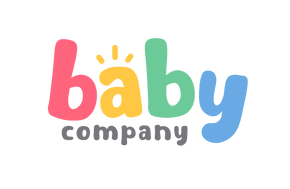When you travel with kids, safety always comes first. That's why choosing the right child car seat is so important. There are two main types: baby car seats and booster seats. They may seem similar, but each is designed for a different age, weight, and height. Understanding these differences helps keep your child safe every time you’re all on the road.
What Is a Car Seat?

A baby car seat ensures that babies and young children are safe during travel. One of the most common features of a car seat is the five-point harness or straps that go over the shoulders, hips, and between the legs. Many models now feature the ISOFIX car seat system for quicker and safer installation. Car seats do expire in six to ten years, so always check the expiration date before purchasing.
Car seats come in different classifications based on your baby’s age and size:
-
Group 0: Infant rear-facing car seats for 0 to 6 months or up to 10kg.
-
Group 0+: Rear-facing car seats with added safety features for 0 to 12 months or up to 13kg.
-
Group 1: Forward-facing car seats with a harness for babies aged 9 months to 4 years or 9 to 18kg.
-
Group 2: High-back booster seats with added support for 4 to 6-year-olds or 15 to 25kg.
-
Group 3: Backless booster seats for older children aged 6 to 12 years or weighing 22 to 36kg.
It’s safest to keep babies in a rear-facing car seat until at least age two or until they outgrow it, then transition to a forward-facing car seat, often used until ages four to seven. Other car seat types include:
-
Convertible seats that can switch between rear and forward-facing as your child grows.
-
All-in-one seats that adapt across multiple stages, from infancy to early childhood.
Looping Sydney Baby Car Seat
Read more: How to Choose the Best Car Seat Types for Your Kid's Age
What Is a Booster Seat?

Once your child is too big for their car seat, the next step is a booster seat. Unlike the other, a booster seat doesn't have its own harness. Instead, it raises your child so the car's seatbelt fits correctly across their chest and hips, not their neck or stomach.
So, when to use a booster car seat? Booster seats are usually for kids ages four to twelve, or until they reach 4 feet 9 inches in height.
Types of booster seats include:
-
High-back boosters: Provide extra head, neck, and side protection; ideal for cars without headrests or for younger children transitioning from car seats.
-
Backless boosters: Compact and portable, best for older kids who no longer need the added support but still require correct seatbelt positioning.
-
Combination seats: Start as forward-facing car seats with a harness and later convert into boosters, offering longer usability.
Key Differences Between Car Seats and Booster Seats
|
Feature |
Car Seat |
Booster Seat |
|
Age Range |
Birth up to around 4 to 7 years |
Around 4 to 12 years |
|
Orientation |
Rear-facing for infants, forward-facing for toddlers |
Forward-facing only |
|
Restraint System |
Built-in five-point harness |
Uses the car’s seatbelt |
|
Primary Use |
Protects babies and toddlers with a structured support and harness system |
Position older kids so the seatbelt fits correctly across the lap and shoulder |
|
Transition Point |
Stop using when the child outgrows height/weight limits |
Stop using when the seatbelt alone fits properly (around 4’9” in height) |
Read more: Car Seat Safety: Common Mistakes in Installing a Car Seat
Tips for Choosing the Right Seat

When picking the best car seat or booster seat, make sure to consider these points:
-
Check for car seat safety approvals that comply with global regulations. A child car seat in the Philippines should have valid certification labels, like UNECE 44/04 or R129 (i-Size), or FMVSS 123 in the U.S.
-
Comfort is also a big deal. Kids will sit better if the seat is made of breathable fabric, has soft padding, and has adjustable features.
-
Save money for the long run with seats that can adapt as your child grows.
-
Not all seats work with every car, so check for compatibility or ISOFIX feature before buying.
Baby Company makes it easier with a wide selection of child car seat options in the Philippines—from rear-facing car seat models to ISOFIX car seat systems, and even convenient car seat stroller and car seat and stroller sets.
Ready to keep your child safe on the road? Explore the latest car seat and booster options at the nearest Baby Company stores or shop online today.
FAQs
1. When should I switch my child from a car seat to a booster seat?
You can switch when your child is too tall or heavy for their forward-facing car seat, usually around age four.
2. How long should a child stay in a booster seat?
Kids should use a booster until they are tall enough (about 4’9” in height) for the seatbelt to fit well, usually between ages eight and 12.
3. What's safer: a high-back or backless booster seat?
Both are safe if used right, but high-back boosters give more support, especially for younger kids or cars without headrests.
4. Do car seats expire?
Yes. Most car seats expire in six to ten years because they wear out, and safety rules change.
5. Can I buy a used car seat or booster seat?
It's not a good idea unless you know everything about its past and how safe it is. Always buy a new, approved seat for the best safety.






